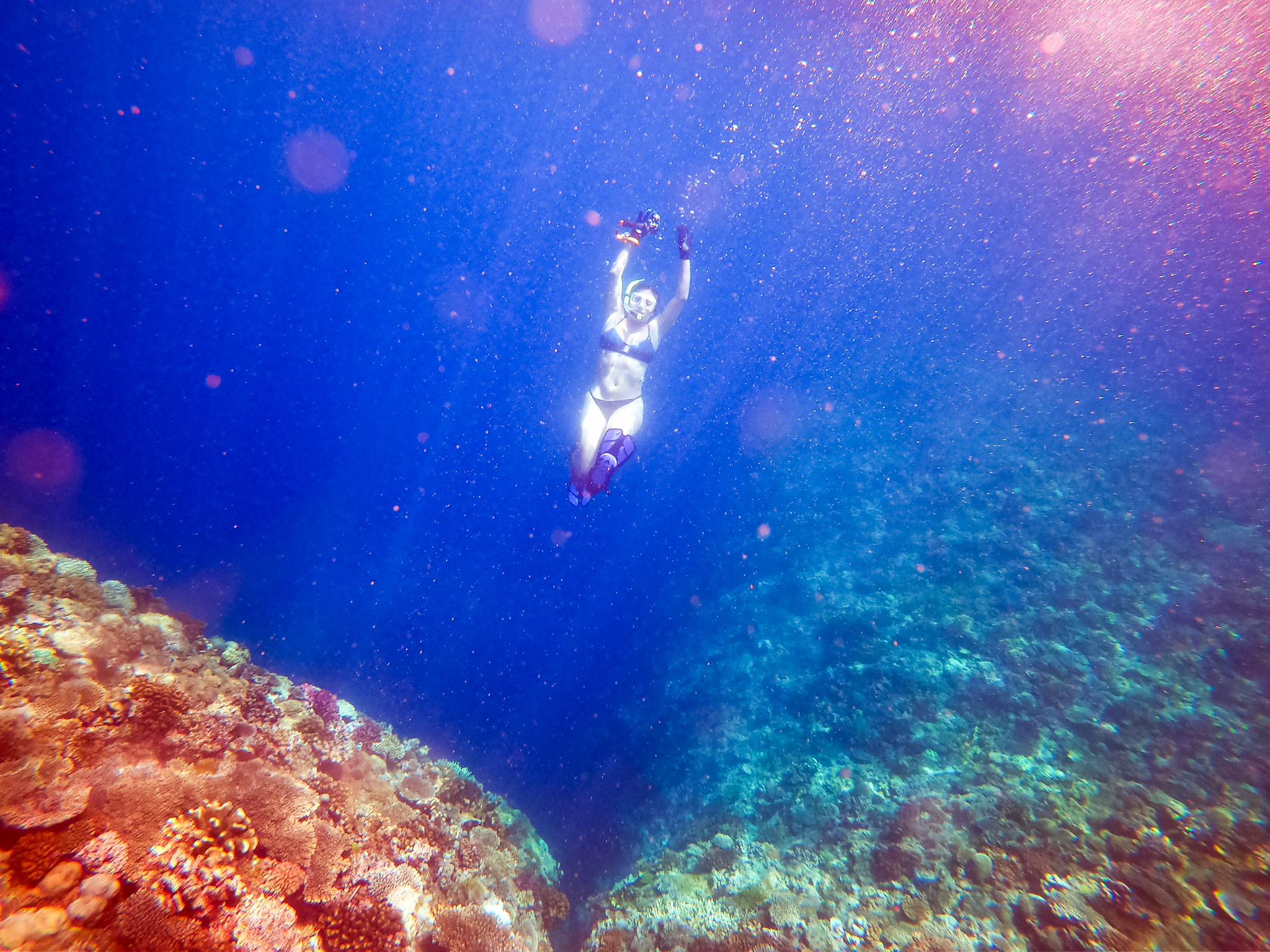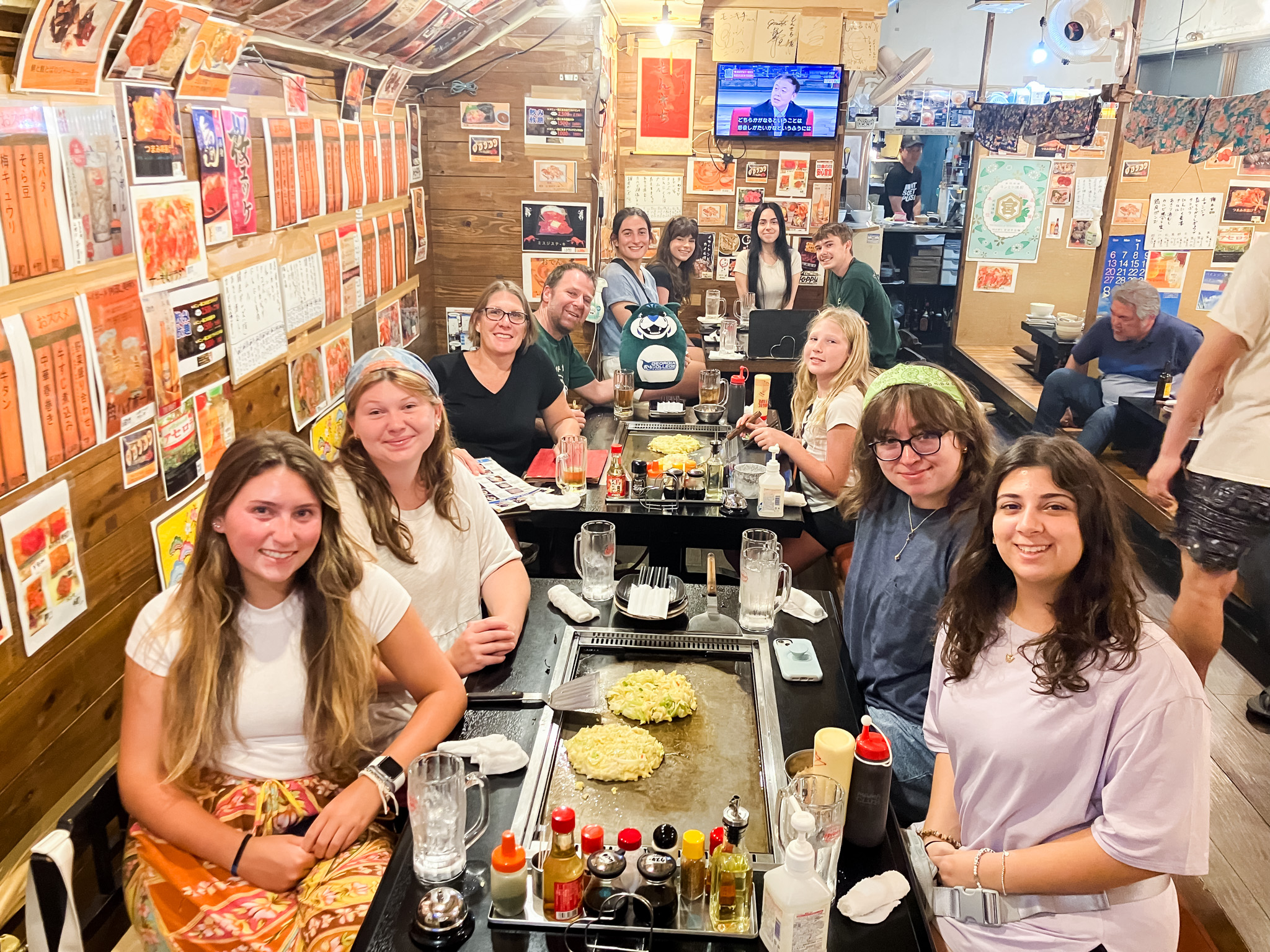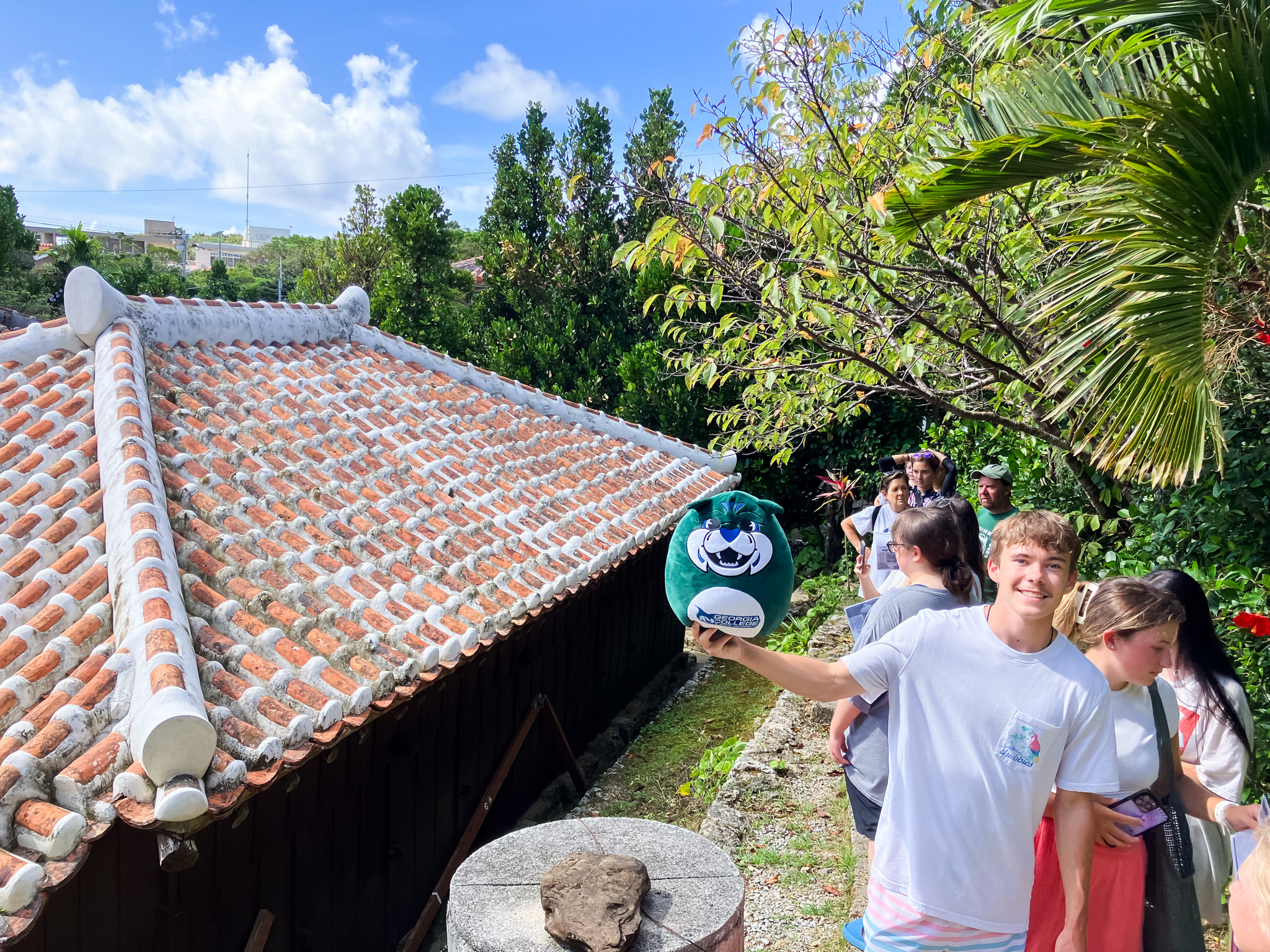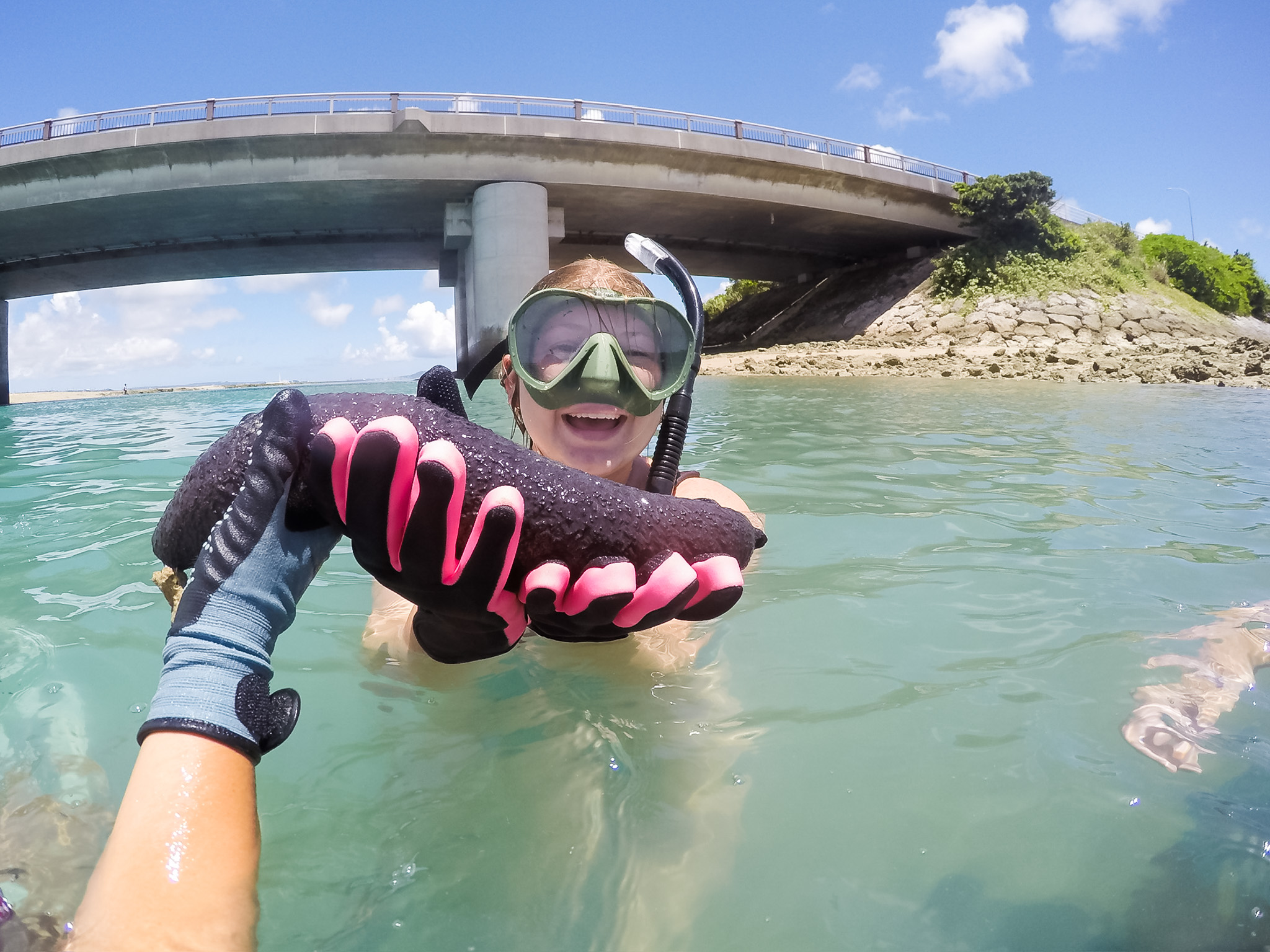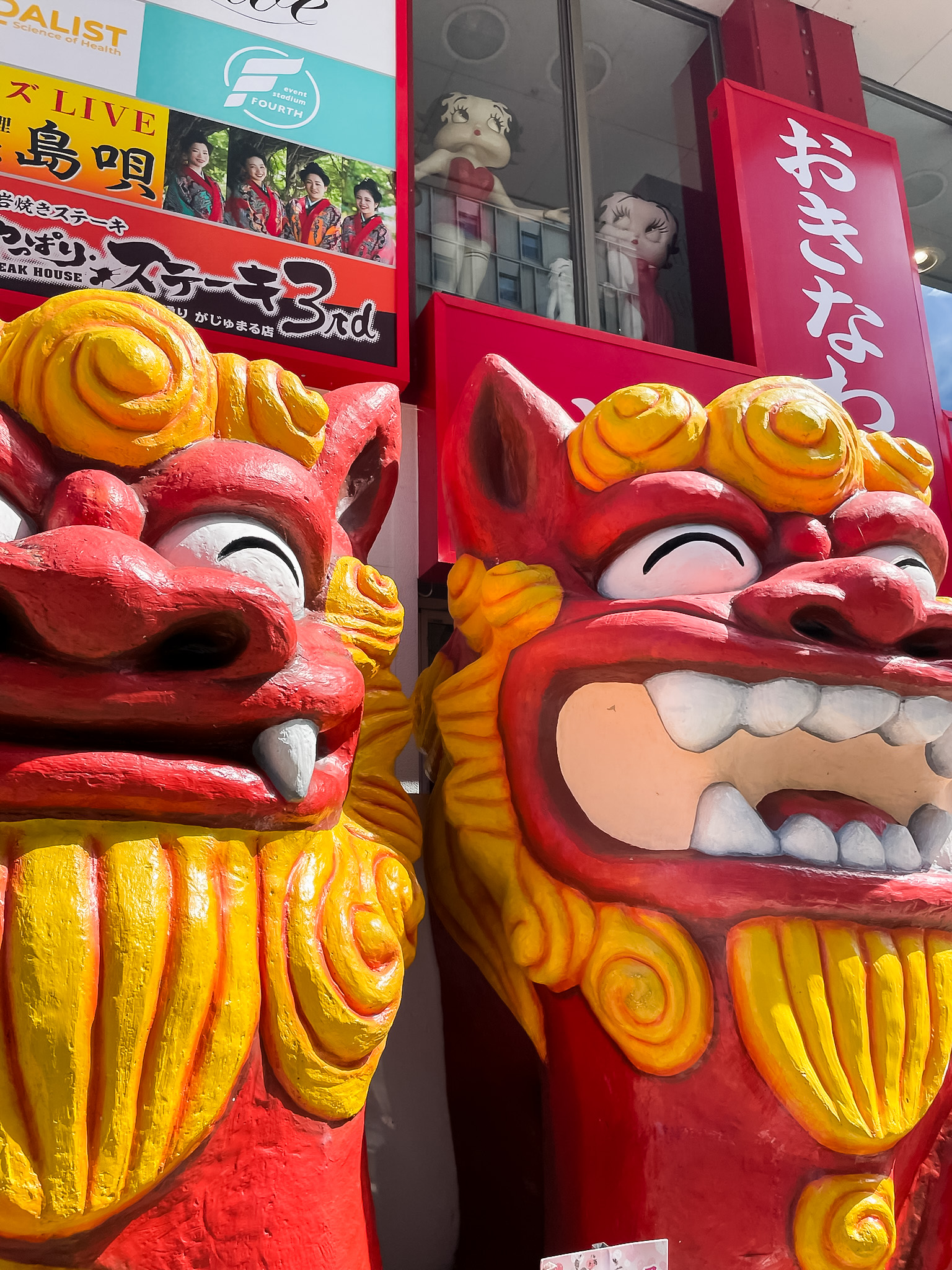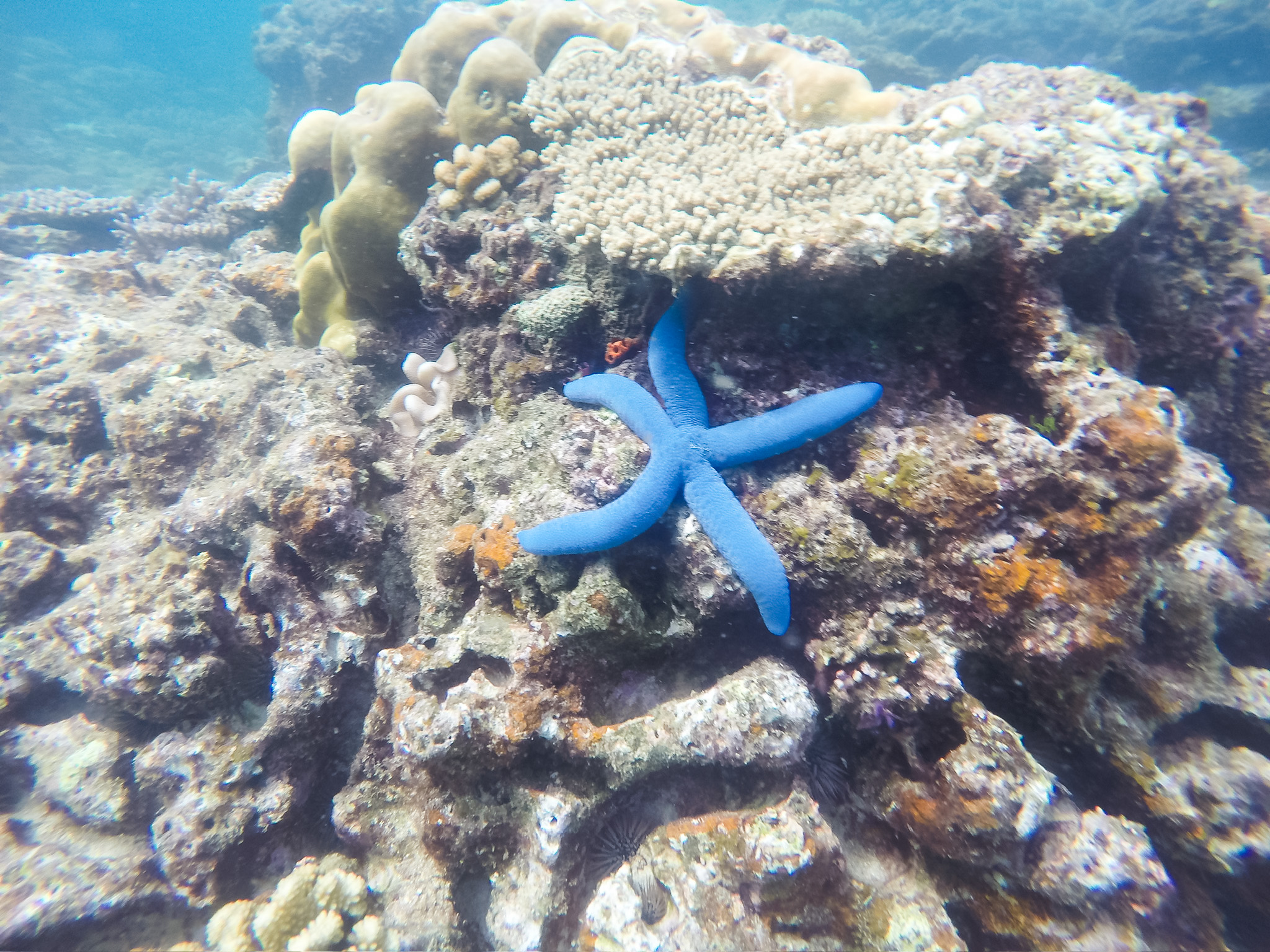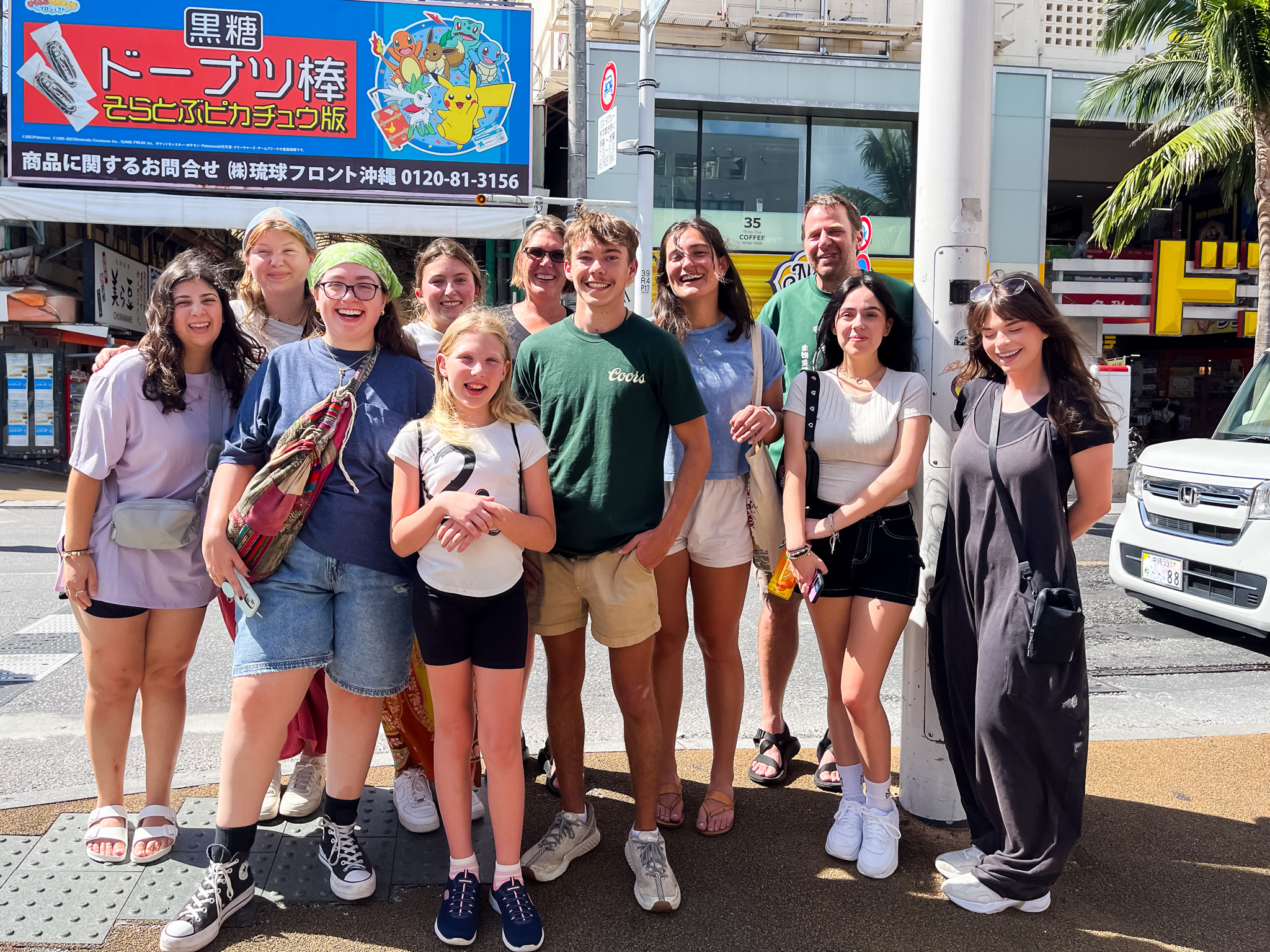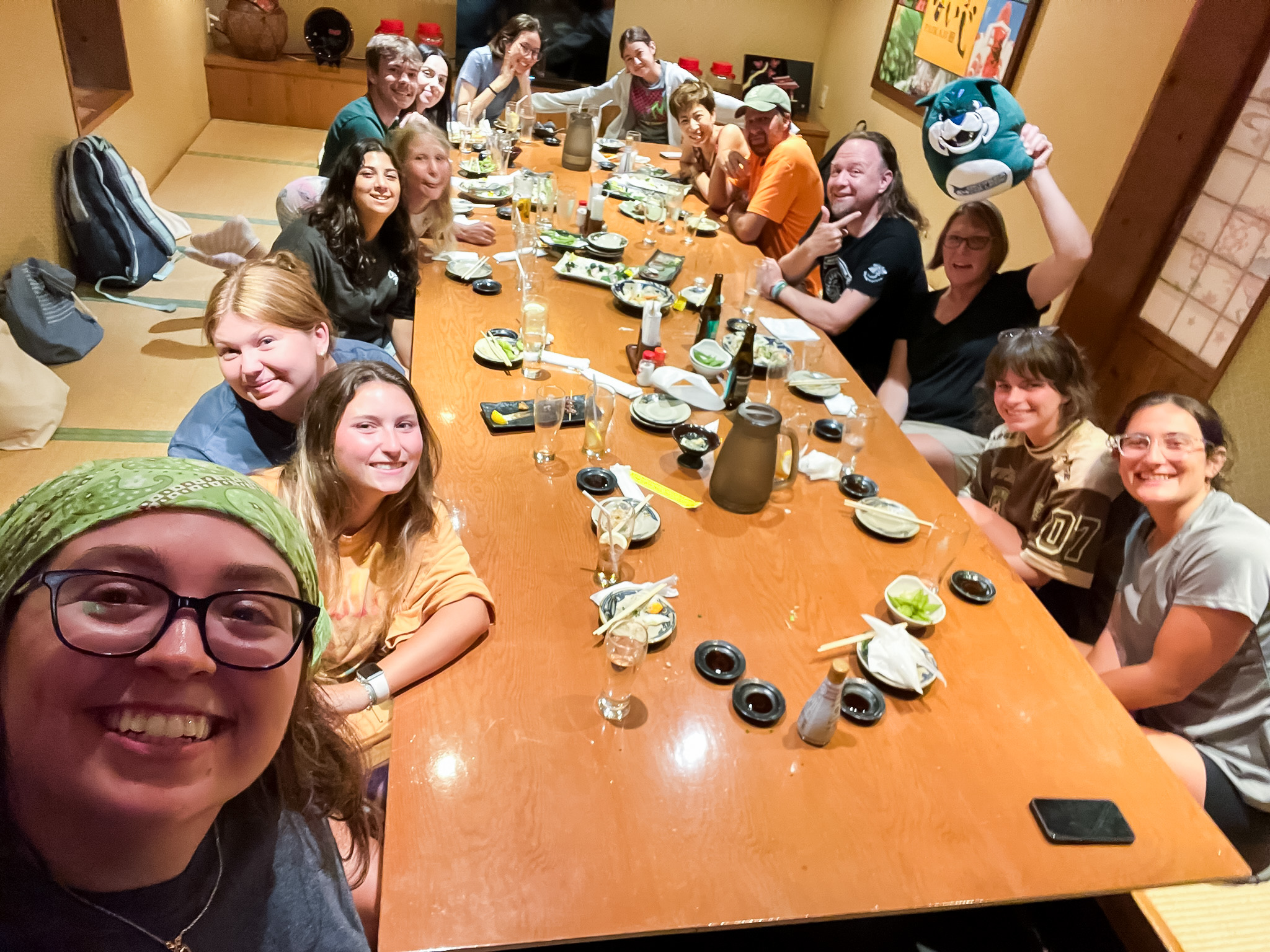GCSU students study coral reefs abroad in Okinawa, Japan
Produced by University Communications
N
ot threatened by a typhoon promising to skirt the country, Associate Professor of Biology Dr. Kristine White led a team of students to study the coral reefs of Okinawa, Japan, this summer.
Amid the pristine, blue-green waters were fish and corals of many colors, all part of vibrant reefs full of life.
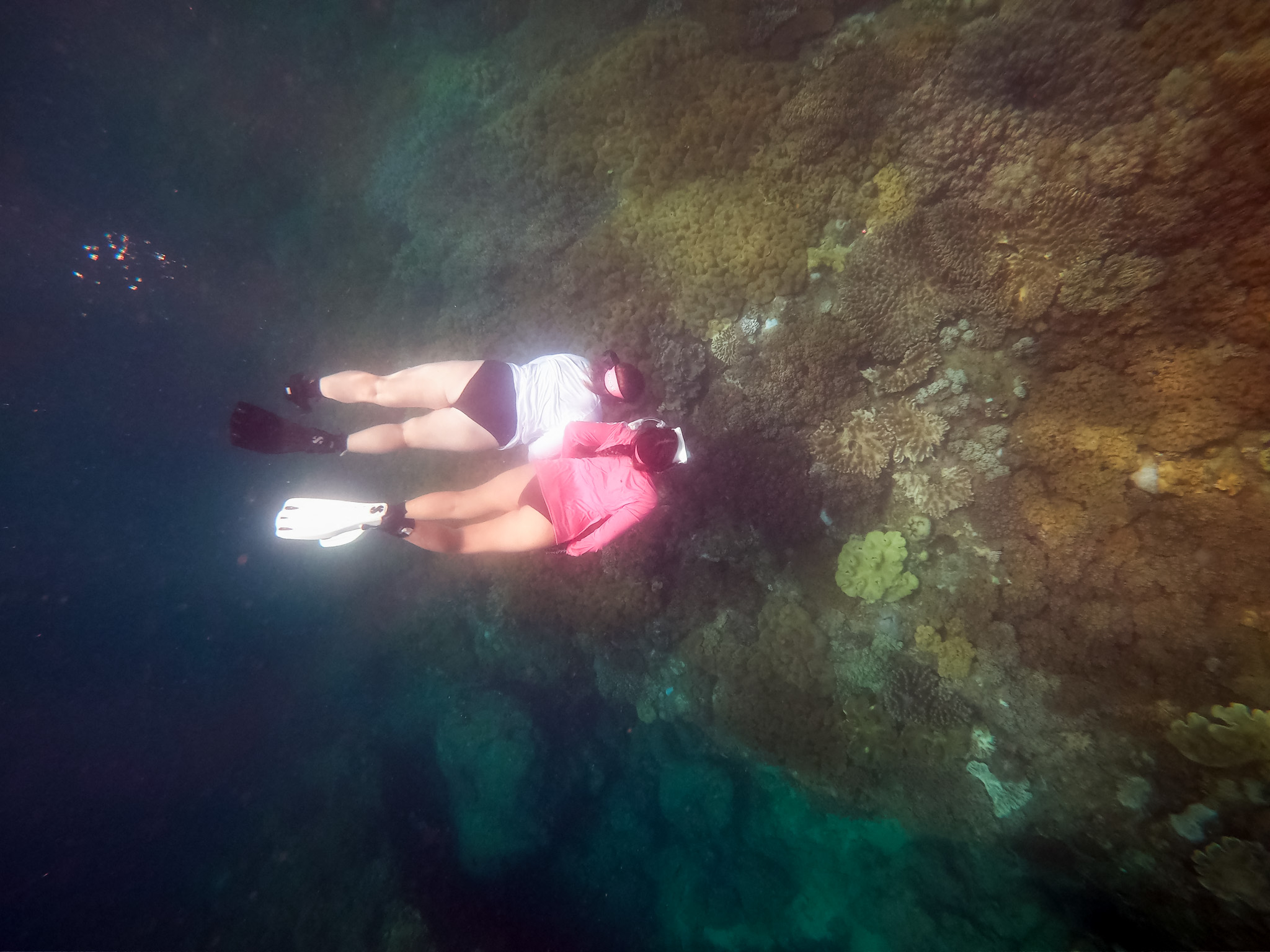
“I love the water, I love the ocean, and so being there was my favorite part,” said senior biology major Kali Holierhoek, who has a concentration in marine biology. “Swimming around and finding things like Nemo and Marlin in a little anemone—there’s nothing like it. The reefs there are so healthy, it’s cool to see.”
Students attended lectures by night, snorkeled by morning and explored the greater city of Okinawa in between.
Four teams of two students were assigned a type of organism—fish, algae, corals or echinoderms, like sea urchins—to identify and draw. Each morning, they put lecture into practice by snorkeling through Okinawa’s reef sites.
“The idea was to see new things each day to highlight that a coral reef isn’t just coral,” White said. “Learning the information, you can do, but to really remember it, I think you have to go do it.”
So, they did. Even recent Georgia College & State University graduate Angelina Cofrancesco, ’24, who walked in May before leaving for Japan. She studied biology at Georgia College with a pre-med focus and is now applying to medical schools.
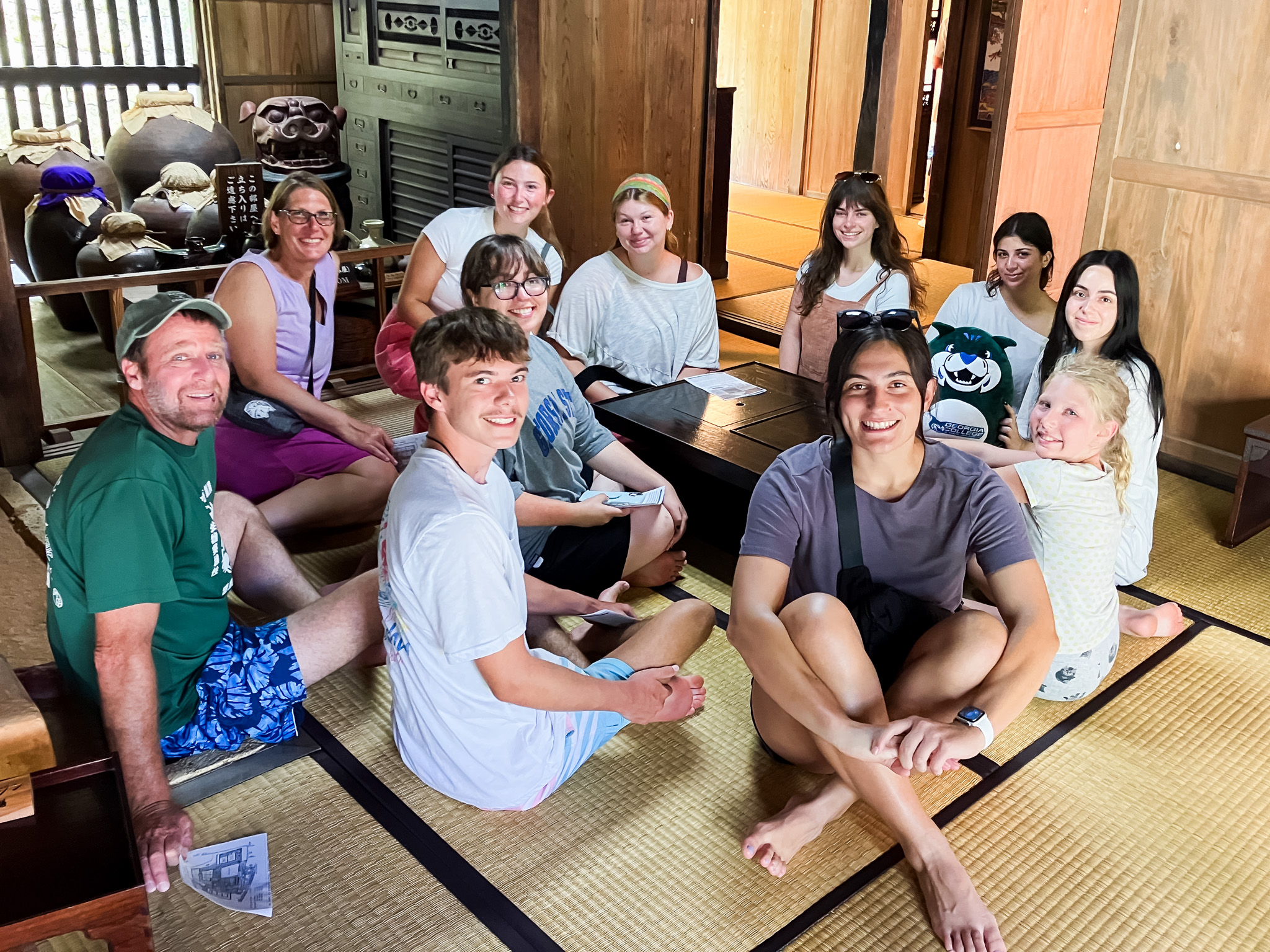
“It never felt like work, because it was so enjoyable to be in the water. It was so warm and we got to see so much,” Cofrancesco said. “I really love traveling to other countries, because it really shows you how we're all caught up in one way of life. By going to Japan, it opened my point of view. You just need to know that there's way more out there than just what you're doing in that moment.”
“As a doctor, you want to understand where patients are coming from and have cultural context when speaking to someone about their health plan,” she said. “That really affects a person’s way of life, so I think cultural education is a big part of being a doctor.”
Outside the classroom, each student took part in cultural excursions and explored Okinawa in their free time.

They visited a large, open-air market with fishmongers, the historic Nakamura House that preserves 15th century Japanese architecture and enjoyed a party on the beach with the members and associates of James Reimer’s MISE lab from the University of the Ryukyus—the hosting university and White’s former postdoctoral host lab.
The group particularly enjoyed relaxing in an izakaya, an informal restaurant that allows groups to sit in their own, private room.
“It was like a little restaurant, and we had our own private room,” said rising sophomore and biology major Odeya Atar. “We went with a sensei from the university, and we had a bunch of food on many plates that we passed around. It was a fun environment.”
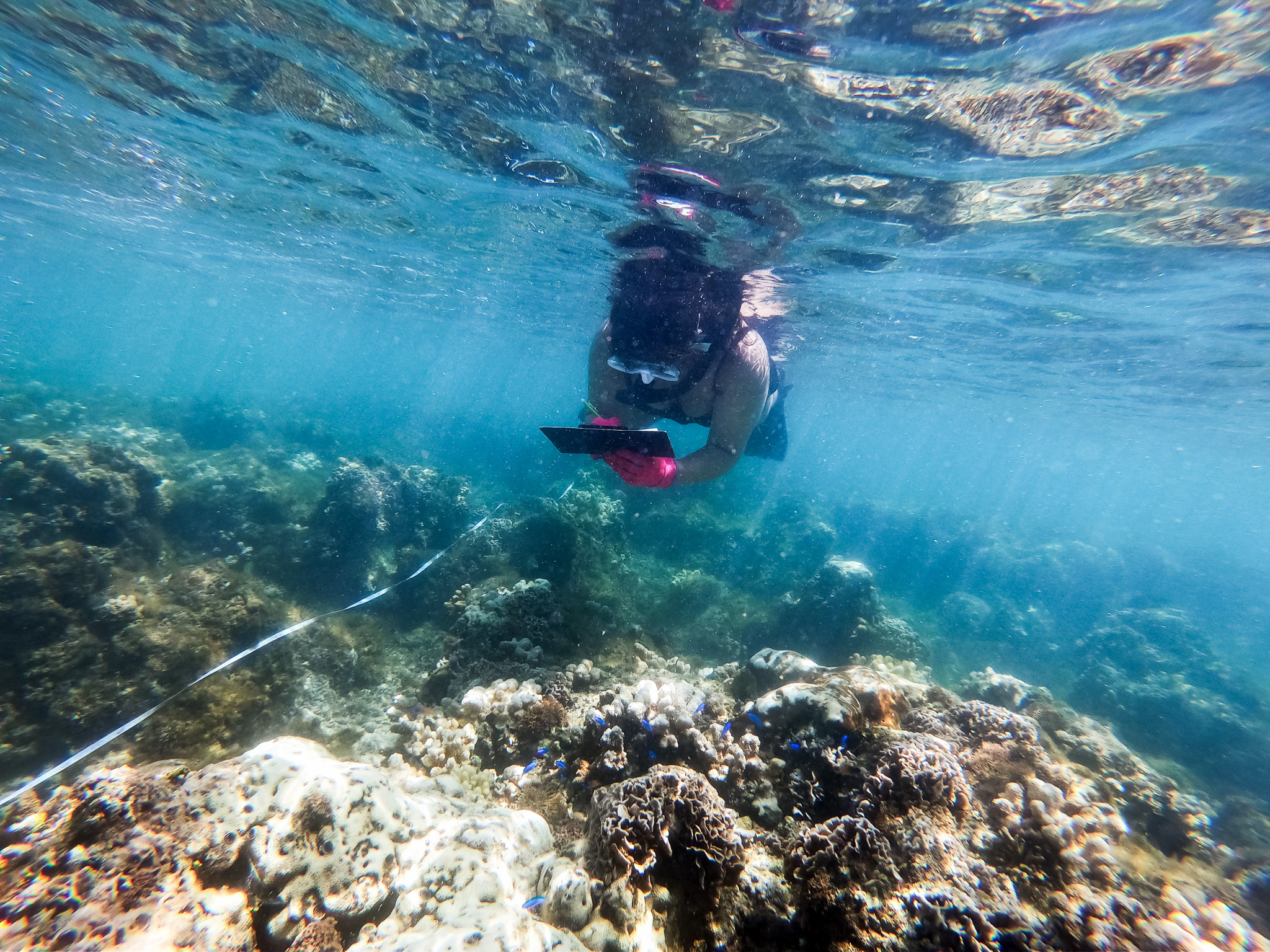
“At the market, all the fish were so vibrant, and all the shopkeepers were so friendly,” she said. “The people in general were really friendly and respectful. For sightseeing, the ocean was just beautiful—anywhere—it was the bluest water I’ve ever seen.”
The trip they recently returned from is a program offered by the International Education Center at Georgia College as an option for studying abroad. They flew to Japan and stayed for two weeks, absorbing the warm salt water and sites of Okinawa.
White intends to offer the program again in 2026, as she alternates with the program for marine biology in the Bahamas.
“I never thought I would get the opportunity to go to Japan,” Holierhoek said. “I have always wanted to go to Japan, and I did it. I did it because programs like this are offered and funding is offered. You just have to take the opportunity and do it because, truly, it will change you.”
“Seeing something that different opens your eyes,” she said. “It's important to pick yourself up and throw yourself somewhere else, because it makes you think differently. I think it makes you a better person.”
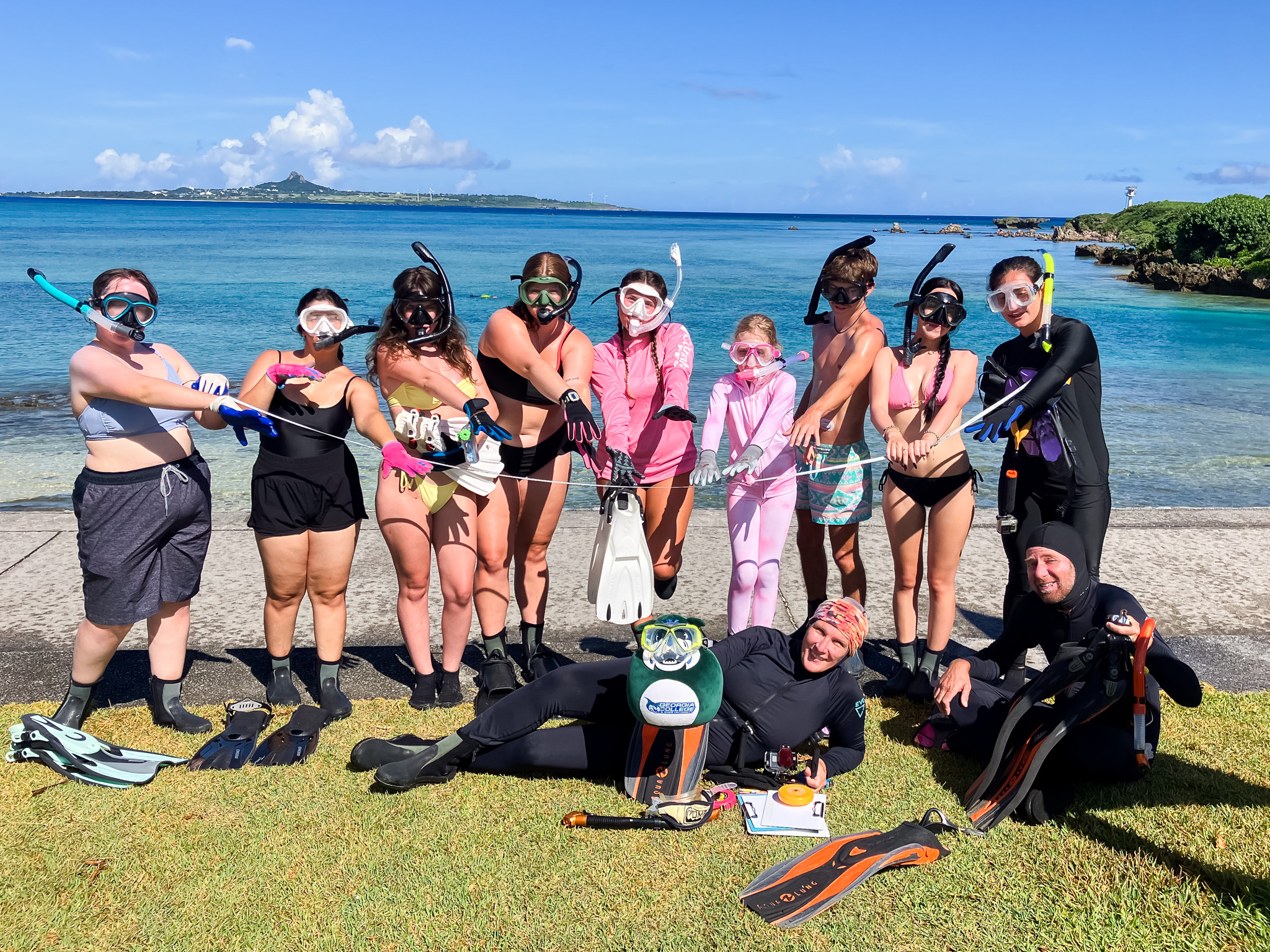

Learn more about the Engage Pillar in our Imagine 2030 Strategic Plan
